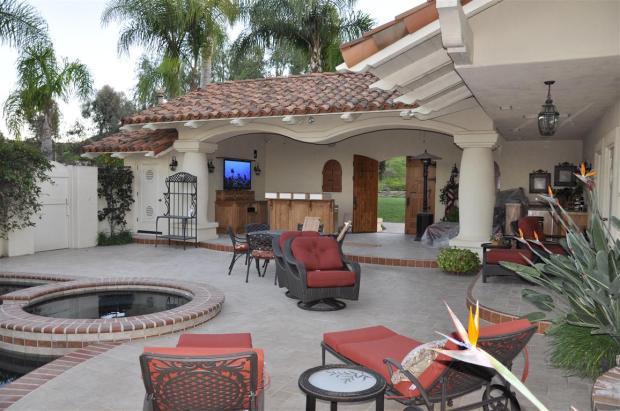
Many homes built in the last half-century feature concrete driveways, concrete walkways, or both. Concrete is the material of choice for these outdoor jobs because it’s sturdy and lasts a long time. But what do you do when your concrete driveway or walkway begins to show the signs of aging? Cracks will appear, weeds may begin to sprout, and suddenly you’re looking at an eyesore. Aging concrete is an all too common source of headaches for homeowners and home exteriors. If it has to be torn out and new concrete poured, it can be painfully expensive to fix. The good news is that it’s not always necessary. Concrete resurfacing is a way of giving your concrete walkways and driveway new life:
The Process of Concrete Resurfacing
Concrete resurfacing is a process by which concrete is cleaned, repaired, and overlaid with a new surface. Here is an overview of the steps involved for this fix to aging concrete:
- Cleaning. The old surface is washed with a power washer to get rid of dirt and grime.
- Repairing the Cracks. Cracks are primed, reinforced with fabric, then covered with a polymer concrete that is smoothed out evenly with the rest of the concrete driveway.
- Repairing the Holes. Holes are filled in with an epoxy mortar.
- Covering the Surface. Once all the repairs are made, the surface is primed, then covered with a spray-on polymer concrete, which is then finished with a trowel.
- Coloring and Sealing. Decorative coloring is then applied, if you want it, and a seal coat that will protect the new surface from the elements.
- Curing. Then, you wait. Plan on not using your concrete driveway for 48-72 hours while the surface dries completely.
As extensive as this may sound, it is still quicker and more economical than pouring concrete for a whole new surface.
Options for Aging Concrete
Of course, aging concrete starts as a basic repair job, but resurfacing creates a whole host of secondary options for increased visual appeal. Indeed, many homeowners find they can only justify the cost because intensive concrete resurfacing, while expensive, can also return concrete to “like-new” status. Concrete staining, perhaps the most common task associated with resurfacing, is capable of creating vibrant colors and wide-ranging effects such as distressed leather, wood, natural stone, or colorful murals. More than staining, ask your concrete contractor about the potential for these aging concrete options:
- Overlays, such as flagstone, brick or stone patterns,
- Sawcut patterns, either symmetrical or random,
- Stamping or Etching, in which a pattern is carved into the surface to give the look of stone or brick at a fraction of the cost, and
- Exposed Aggregate Finishes, in which small stones are embedded in the surface to give a rough texture to the surface of your concrete driveway or walkway, making for a more slip-free surface.
With so many possibilities, concrete resurfacing seems to be the best option out there for revitalizing worn-out concrete. However, do note that if your concrete driveway has major damage from freezing or thawing, is heaving, or has underlying soil problems, you may end up tearing up the new surface and pouring concrete all over again, essentially replace your entire driveway. So it’s best to check with the concrete pros to see if this option is right for you.
Check out our Driveway Paving Cost Calculator to build a budget for your driveway project.
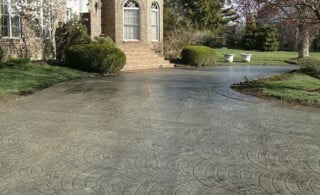 Pouring a Concrete Driveway or Walkway
Pouring a Concrete Driveway or Walkway 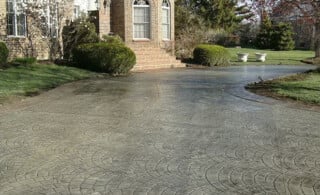 Spruce Up with Decorative Concrete Resurfacing
Spruce Up with Decorative Concrete Resurfacing 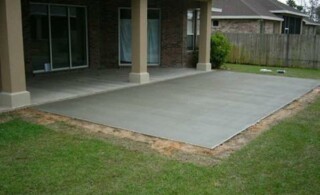 Concrete Patios
Concrete Patios 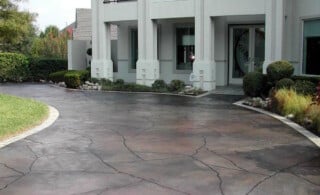 Cracked Concrete
Cracked Concrete 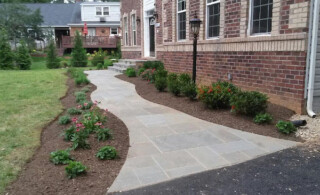 Green Driveways, Patios, Walkways, & Floors
Green Driveways, Patios, Walkways, & Floors 

Are You Familiar With This Topic? Share Your Experience.